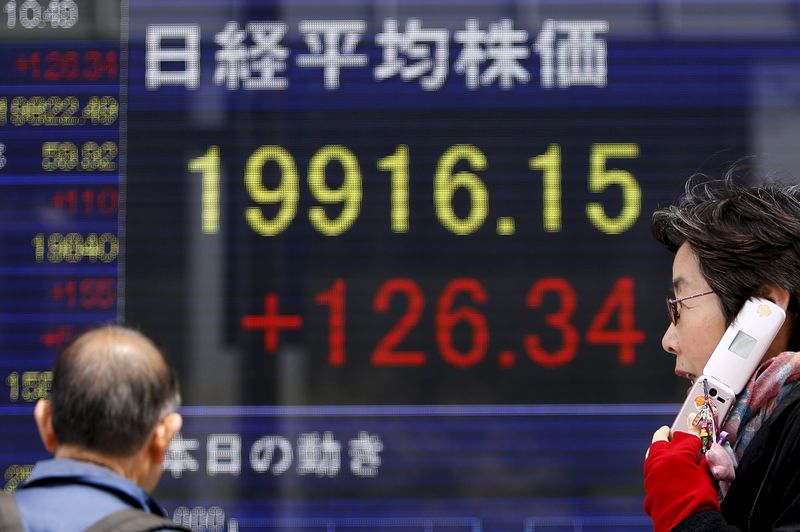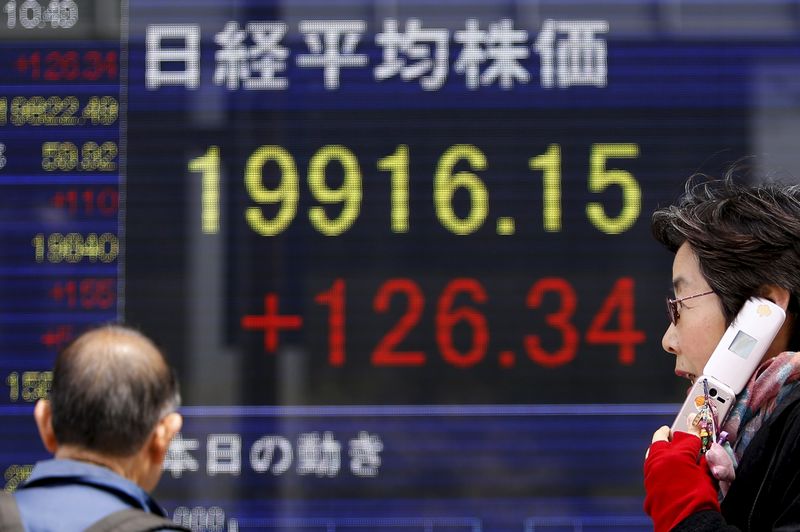
Investing.com– Most Asian stocks moved in a flat-to-low range on Friday and were nursing steep losses this week as the prospect of a slower fall in U.S. interest rates eroded risk appetite.
Japanese markets were an exception, rising slightly even as stronger than expected consumer inflation data highlighted the potential for more interest rate hikes by the Bank of Japan. But comments from the BOJ on Thursday suggested that rates will likely rise later rather than sooner.
Asian markets took middling cues from a flat overnight close on Wall Street, as U.S. stocks tumbled from record highs after the Federal Reserve signaled a slower pace of rate cuts in 2025. Wall Street futures fell further in Asia trade after a Donald Trump-backed spending bill was rejected by the House of Representatives, heralding a government shutdown.
Japanese stocks drift higher; CPI reads stronger than expected
Japan’s Nikkei 225 and TOPIX indexes both rose about 0.2%, faring better than their regional peers. Both indexes were set to lose between 1% to 1.4% this week.
Japanese consumer price index inflation read higher than expected for November, with core inflation rising further above the BOJ’s 2% annual target amid strong private spending. The reading furthered the case for more rate hikes by the BOJ.
The central bank kept rates steady on Thursday, citing caution over Japan’s economic outlook, as well as what U.S. policies would entail for the global economy.
BOJ Governor Kazuo Ueda reiterated the bank’s plans to raise interest rates further, but did not provide a specific timeline for a hike. His comments on watching the spring wage negotiations for more insight on wage growth suggested that a hike may come later in 2025- a scenario that bodes well for Japanese stocks in the near-term.
Chinese stocks flat, PBOC leaves benchmark rate unchanged
China’s Shanghai Shenzhen CSI 300 and Shanghai Composite indexes clocked mild gains on Friday, and were the best performers in Asia this week, clocking smaller losses than their regional peers.
Hong Kong’s Hang Seng index rose 0.1% and was set to lose 1% this week.
Losses in Chinese markets were curtailed by growing confidence that Beijing will ramp up fiscal spending in 2025 to boost economic growth, amid persistent signs of weakness in Asia’s biggest economy.
The People’s Bank of China left its benchmark loan prime rate unchanged on Friday, with the lender seen having limited headroom to cut rates further into record-low territory.
A weak yuan has limited the PBOC’s ability to cut rates further, while monetary easing measures have so far provided limited support to the Chinese economy. Beijing is now expected to ramp up fiscal spending in 2025 to support growth, with a recent Reuters report suggesting that the country will increase its deficit to 4% of its gross domestic product.
Asia stocks battered by hawkish Fed outlook
Broader Asian markets retreated on Friday, and were nursing losses this week after hawkish signals from the Fed. Relatively higher U.S. rates diminish the appeal of risk-driven assets.
Australia’s ASX 200 index slid 1.3%, pressured by a 3.7% drop in Wesfarmers Ltd (ASX:WES) after the conglomerate said it will sell its industrial gas supply arm to a unit of Japan’s Taiyo Nippon Sanso Corp (TYO:4091) for A$770 million ($480.33 million).
The ASX 200 was set to lose nearly 3% this week, as it tumbled from record highs on waning risk appetite.
South Korea’s KOSPI slid 1.3% and was the worst performer in Asia this week with a 3.5% decline. Heightened political uncertainty in the country kept investors averse towards local markets, while steep losses in local chipmakers also weighed.
Futures for India’s Nifty 50 index pointed to a weak open, with the index nursing a 2.3% drop this week.

